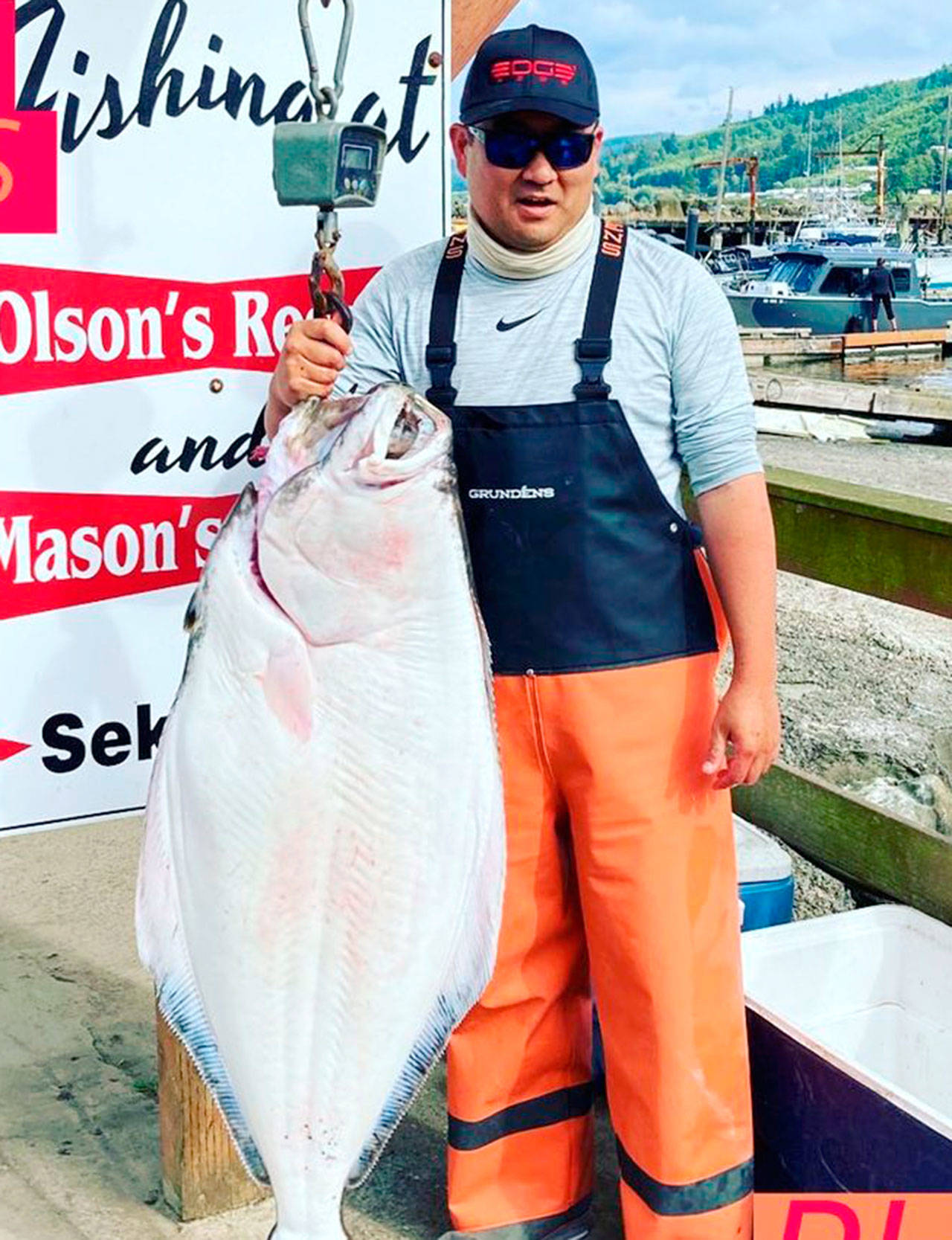HALIBUT CATCH ESTIMATES provide a path to complete seasons and fully fulfilled catch quotas for North Coast and Puget Sound halibut anglers.
Puget Sound halibut anglers, which include those fishing for halibut along the Strait of Juan de Fuca, have landed 52,768 of the 77,550-pound halibut catch quota.
North Coast halibut anglers, those fishing off Neah Bay in Marine Area 4 and La Push in Marine Area 3, have caught 37,139 pounds of a 128,117-pound halibut catch quota.
Those numbers are through Aug. 15 and provided by state Department of Fish and Wildlife intergovernmental ocean policy coordinator Heather Hall last week.
Hall included some projections and thoughts on where the fishery stands for the remainder of halibut season in an email sent last Friday.
“There are six weeks left until the end of September, [so a] rough look at Puget Sound suggests that if catch stays the same as the first two weeks of the late season, there is enough quota to get through nine more weeks,” Hall wrote.
“Average weekly catch in the North Coast is 18,500 pounds. If catch in the North Coast averages 20,000 pounds per week, the North Coast can get through 4.6 more weeks. If catch averages closer to 18,000 pounds, the North Coast can get through five more weeks. Average weekly catch would have to be 15,000 pounds to last six weeks.”
It’s unknown what impact last weekend’s stormy weather had on limiting catch totals, especially in the Pacific Ocean, where anglers had to battle high swells and some heavy rain for much of the three-day fishing window.
And with school beginning to start, even in mostly virtual formats, angler pressure is likely to die down a bit after Labor Day weekend, leaving the potential for weekly catch averages to fall.
Dabob Bay hit or miss
Quilcene’s Ward Norden, a former fisheries biologist and owner of Snapper Tackle Co., wrote in with an update on hatchery coho fishing in Dabob Bay off Quilcene.
“As usual, Dabob coho fishing is still running hot and cold,” Norden wrote. “One day fishing goes gangbusters when a large school of coho rolls in, then for the next few days fishing is quite slow.
“As of last Sunday only one school of salmon had arrived, providing outstanding fishing for a couple lucky anglers [last week], but by Sunday, even the gill netters were not doing well. Sounds pretty normal for late August, but more schools will be rolling in almost daily as we get to September.
“One thing worth noting from boat anglers is that they were seeing fish holding at a depth of about 35 to 40 feet even if they weren’t biting. Good to know.”
Pumpout app
Pumpout Nav, a free app and website resource that provides information on marine vessel pumpout and portable toilet dump stations, has expanded to our state.
Boaters can now use the tool to find nearly 200 pumpout and portable toilet dump stations in Washington, in addition to hundreds of pumpout and floating restroom facilities in Oregon and California.
Pumpout Nav uses the boater’s location information to suggest the nearest pumpout stations on a map or as a list, helping boaters find the amenities they need and marinas promote their services.
The app displays each facility’s operational status, cost, hours and detailed location within the marina. It also provides instructions on how to use a pumpout station and information about the environmental risks and applicable regulations regarding sewage discharge.
Functional pumpout stations are critical for boaters to comply with the Puget Sound No Discharge Zone rule, which went into effect in 2018. The ruling established Puget Sound and certain adjoining waters as areas where boaters may not release treated or untreated sewage from Type I and Type II marine sanitation devices.
The app can be downloaded from the Apple or Google Play stores.
Information also can be accessed at pumpoutwashington.org/where-to-pumpout.
Washington Sea Grant and the state Parks Department worked to bring the program to our waterways.
________
Sports reporter Michael Carman can be contacted at 360-406-0674 or at mcarman@peninsuladailynews.com.

